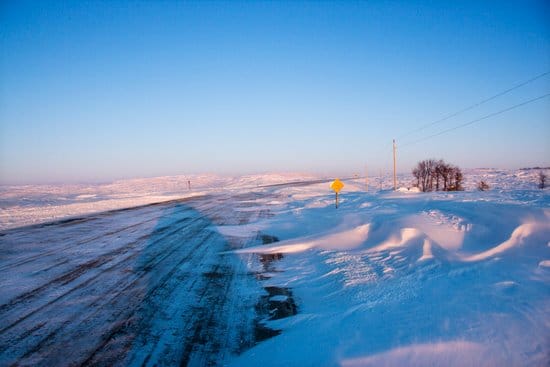Snowy and icy roads are the cause over a hundred thousand accidents every year, according to the US Department of Transportation. One of the most common, and arguably the most dangerous, parts about driving in the winter is hitting a hidden patch of ice called black ice.
Black ice is a thin coat of highly transparent ice. It is called black ice because it is so thin it blends in with road pavements making it practically transparent and very hard to see- therefore it is highly dangerous. Black ice can be anywhere, but it is commonly found on bridges, overpasses, and on shared areas of roadways, like intersections.
If you are driving in a winter storm, hitting black ice may be unavoidable, but you can minimize your risk of an accident by taking these precautions.
Prepare for Icy Road Conditions
If you have to get out on the roadways during a snow or ice storm, use these tips:
Drive Slow – Reduce your speed to a slow and steady pace. You should brake for stop signs and intersections earlier than normal and leave at least an 8-10 second following distance between vehicles.
Know Your Brakes- Look at your car’s manual to see if your brake system is standard or anti-lock (ABS). If you hit black ice with standard brakes: steer into the skid and slowly pump your breaks until you are back in control. If you have ABS, steer into the skid and apply steady pressure to your breaks until you are back in control (do not pump them).
Make Sure You Have the Right Tires- When winter weather hits, it is recommended to switch from regular tires to snow tires or place snow chains on your tires. However, if you don’t want to replace your tires or purchase snow chains, make sure that your regular tires have the proper amount of tread and pressure to get you through the winter months.
Stay Alert- When you are driving over areas that black ice is commonly found, like bridges or overpasses, stay alert and be aware that your tires will probably start to lose traction. If you can feel your vehicle start to slide, don’t panic, reduce your speed even lower and proceed with caution.
3 Ways to Spot Black Ice
- Know When it Occurs: Black Ice occurs when the air is 32 degrees or below and rain/moisture is present on roadways. You can also expect black ice if it is sleeting or your car has ice frozen to its surface
- Glossy Looking Roadways: If a roadway looks glossy, wet, or patchy and it is below 32 degrees, you are probably looking at black ice. Before you get on the road, look at your sidewalk and see if it looks wet. If it does, very carefully move your foot over on top of it and see if you slide. If black ice has accumulated on the sidewalk, there is a good chance it will also be on the road.
- Pay Attention to the Cars In Front of You: If the cars in front of you are starting to slide or fishtail they are probably encountering black ice. If you are following at the recommended distance, you should have time to slowly change your speed before you drive over it. Another easy indicator is cars or tire tracks in the ditch or grass median.
The best way to avoid black ice is to completely stay off of the roadways when winter weather hits, but if you already know that won’t be an option, prepare yourself and with our winter driving safety tips.
Related Articles:
8 Winter Driving Tips for New Drivers
This article is furnished by California Casualty, providing auto and home insurance to educators, law enforcement officers, firefighters, and nurses. Get a quote at 1.866.704.8614 or www.calcas.com.
- Graduation – When to Remove Your Child from Your Auto Policy - May 18, 2023
- How to Prevent Catalytic Converter Theft - May 17, 2023
- How Much Does Home Insurance Cost? - May 17, 2023

